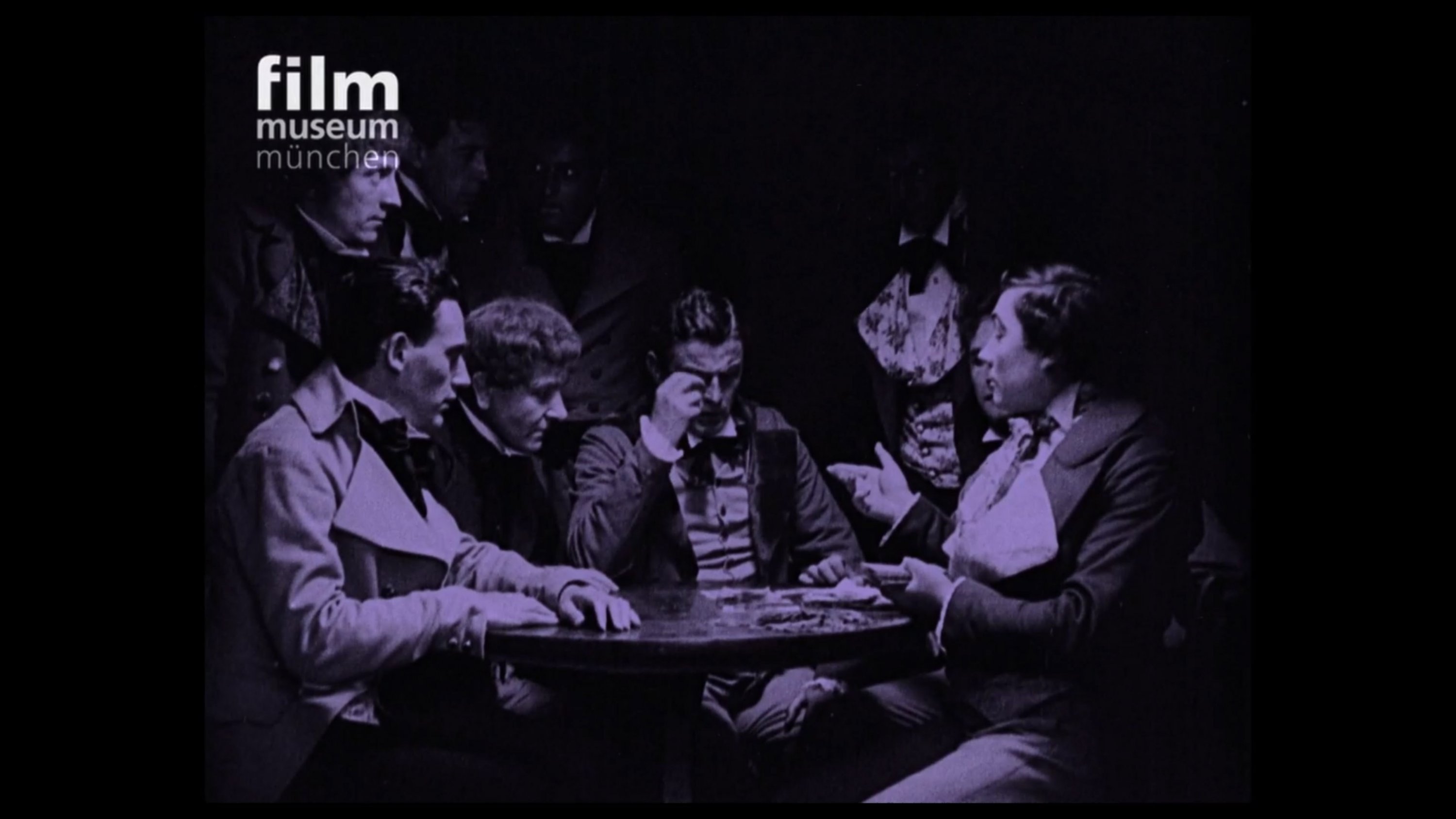Menu Biuletynu Informacji
THE STUDENT OF PRAGUE

THE STUDENT OF PRAGUE
The Student of Prague
(Der Student von Prag)
Dir. Stellan Rye; script Hanns Heinz Ewers; cinemat. Guido Seeber
Deutsche Bioscope GmbH, Germany, 1913
Cast: Paul Wegener (Balduin, a Student), John Gottowt (Scapinelli), Grete Berger (Countess Margit von Schwarzenberg), Lyda Salmonová (Lyduschka)
DCP, 75’, tinted, intertitles/subtitles: DE/PL, EN, source: Filmmuseum München
In 19th-century Prague, a student called Balduin, an accomplished fencer and pleasure-seeker, is suffering financial hardship. He feels his poverty even more acutely when he falls in love with Countess Margit, whom he saved from drowning. Margit, however, is also being courted by Balduin's wealthy cousin. The desperate young man strikes a deal with the demonic Scapinelli to receive enormous wealth, unaware that it means selling his own reflection – and living alongside a doppelgänger.
A groundbreaking work in the history of German cinema, the film heralded the arrival of Expressionism, with its innovative use of light and shadows. It is also recognised as the first horror film to employ Faustian themes and the doppelgänger motif. This dark tale fits within the genre of autorenfilm (auteur films), which aimed to legitimise cinema as an art form through collaboration with established writers – in this case, it was Hanns Heinz Ewers, a respected author of literary fantasy, whose screenplay was based loosely on a short story by Edgar Allan Poe. At the same time, the film also initiated another trend, that of Märchenfilmen, which were movies based on fairy tales and legends, drawing on Romantic traditions. This allowed filmmakers to elevate the still-new medium by linking it to national culture, providing a pretext for explorations in form and also technical experiments. Here, cinematographer Guido Seeber created pioneering special effects, particularly the trick with the mirror that showed both the protagonist and his double at the same time, which must have impressed the audiences of the time, who received the film enthusiastically. The attractiveness and archetypal nature of The Student of Prague is also evidenced by the fact that it saw two remakes soon after its initial release: a 1926 version directed by Henrik Galeen, featuring Conrad Veidt in the title role, and one from 1935 by Arthur Robinson.
The original version of the film has been lost, leaving only a shortened version from 1926 and an English export version that have been preserved. The film was reconstructed in 1987 under the supervision of Dr Wilfried Kugel, and digitally restored in 2013 by the Filmmuseum in Munich.
music: Artur Rumiński
THURSDAY | NOVEMBER 28 | 18:00
introduction to the movie: Tomasz Kolankiewicz
Contact
National Film Archive – Audiovisual Institute
www.fina.gov.pl
Wałbrzyska Street 3/5
02-739 Warsaw
tel: +48 22 38 04 902
tel: +48 22 38 04 904
e-mail: kancelaria@fina.gov.pl
Cinema Iluzjon
www.iluzjon.fn.org.pl
ul. Narbutta 50a
02-541 Warszawa
tel. +48 22 848 33 33
+48 22 182 46 41
e-mail: kasa.iluzjon@fina.gov.pl

